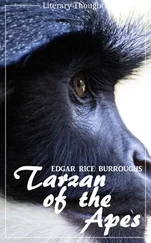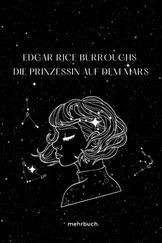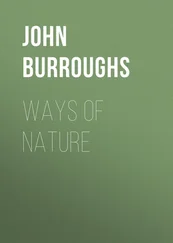John Burroughs - Riverby
Здесь есть возможность читать онлайн «John Burroughs - Riverby» — ознакомительный отрывок электронной книги совершенно бесплатно, а после прочтения отрывка купить полную версию. В некоторых случаях можно слушать аудио, скачать через торрент в формате fb2 и присутствует краткое содержание. Жанр: foreign_antique, foreign_prose, на английском языке. Описание произведения, (предисловие) а так же отзывы посетителей доступны на портале библиотеки ЛибКат.
- Название:Riverby
- Автор:
- Жанр:
- Год:неизвестен
- ISBN:нет данных
- Рейтинг книги:5 / 5. Голосов: 1
-
Избранное:Добавить в избранное
- Отзывы:
-
Ваша оценка:
- 100
- 1
- 2
- 3
- 4
- 5
Riverby: краткое содержание, описание и аннотация
Предлагаем к чтению аннотацию, описание, краткое содержание или предисловие (зависит от того, что написал сам автор книги «Riverby»). Если вы не нашли необходимую информацию о книге — напишите в комментариях, мы постараемся отыскать её.
Riverby — читать онлайн ознакомительный отрывок
Ниже представлен текст книги, разбитый по страницам. Система сохранения места последней прочитанной страницы, позволяет с удобством читать онлайн бесплатно книгу «Riverby», без необходимости каждый раз заново искать на чём Вы остановились. Поставьте закладку, и сможете в любой момент перейти на страницу, на которой закончили чтение.
Интервал:
Закладка:
This lady's-slipper is one of the rarest and choicest of our wild flowers, and its haunts and its beauty are known only to the few. Those who have the secret guard it closely, lest their favorite be exterminated. A well-known botanist in one of the large New England cities told me that it was found in but one place in that neighborhood, and that the secret, so far as he knew, was known to but three persons, and was carefully kept by them.
A friend of mine, an enthusiast on orchids, came one June day a long way by rail to see this flower. I conducted him to the edge of the swamp, lifted up the branches as I would a curtain, and said, "There they are."
"Where?" said he, peering far into the dim recesses.
"Within six feet of you," I replied.
He narrowed his vision, and such an expression of surprise and delight as came over his face! A group of a dozen or more of the plants, some of them twin-flowered, were there almost within reach, the first he had ever seen, and his appreciation of the scene, visible in every look and gesture, was greatly satisfying. In the fall he came and moved a few of the plants to a tamarack swamp in his own vicinity, where they throve and bloomed finely for a few years, and then for some unknown reason failed.
Nearly every June, my friend still comes to feast his eyes upon this queen of the cypripediums.
While returning from my first search for the lady's-slipper, my hat fairly brushed the nest of the red-eyed vireo, which was so cunningly concealed, such an open secret, in the dim, leafless underwoods, that I could but pause and regard it. It was suspended from the end of a small, curving sapling; was flecked here and there by some whitish substance, so as to blend it with the gray mottled boles of the trees; and, in the dimly lighted ground-floor of the woods, was sure to escape any but the most prolonged scrutiny. A couple of large leaves formed a canopy above it. It was not so much hidden as it was rendered invisible by texture and position with reference to light and shade.
A few summers ago I struck a new and beautiful plant in the shape of a weed that had only recently appeared in that part of the country. I was walking through an August meadow when I saw, on a little knoll, a bit of most vivid orange, verging on a crimson. I knew of no flower of such a complexion frequenting such a place as that. On investigation, it proved to be a stranger. It had a rough, hairy, leafless stem about a foot high, surmounted by a corymbose cluster of flowers or flower-heads of dark vivid orange-color. The leaves were deeply notched and toothed, very bristly, and were pressed flat to the ground. The whole plant was a veritable Esau for hairs, and it seemed to lay hold upon the ground as if it was not going to let go easily. And what a fiery plume it had! The next day, in another field a mile away, I chanced upon more of the flowers. On making inquiry, I found that a small patch or colony of the plants had appeared that season, or first been noticed then, in a meadow well known to me from boyhood. They had been cut down with the grass in early July, and the first week in August had shot up and bloomed again. I found the spot aflame with them. Their leaves covered every inch of the surface where they stood, and not a spear of grass grew there. They were taking slow but complete possession; they were devouring the meadow by inches. The plant seemed to be a species of hieracium, or hawkweed, or some closely allied species of the composite family, but I could not find it mentioned in our botanies.
A few days later, on the edge of an adjoining county ten miles distant, I found, probably, its headquarters. It had appeared there a few years before, and was thought to have escaped from some farmer's door-yard. Patches of it were appearing here and there in the fields, and the farmers were thoroughly alive to the danger, and were fighting it like fire. Its seeds are winged like those of the dandelion, and it sows itself far and near. It would be a beautiful acquisition to our midsummer fields, supplying a tint as brilliant as that given by the scarlet poppies to English grain-fields. But it would be an expensive one, as it usurps the land completely. 2 2 This observation was made ten years ago. I have since learned that the plant is Hieracium aurantiacum from Europe, a kind of hawkweed. It is fast becoming a common weed in New York and New England. (1894.)
Parts of New England have already a midsummer flower nearly as brilliant, and probably far less aggressive and noxious, in meadow-beauty, or rhexia, the sole northern genus of a family of tropical plants. I found it very abundant in August in the country bordering on Buzzard's Bay. It was a new flower to me, and I was puzzled to make it out. It seemed like some sort of scarlet evening primrose. The parts were in fours, the petals slightly heart-shaped and convoluted in the bud, the leaves bristly, the calyx-tube prolonged, etc.; but the stem was square, the leaves opposite, and the tube urn-shaped. The flowers were an inch across, and bright purple. It grew in large patches in dry, sandy fields, making the desert gay with color; and also on the edges of marshy places. It eclipses any flower of the open fields known to me farther inland. When we come to improve our wild garden, as recommended by Mr. Robinson in his book on wild gardening, we must not forget the rhexia.
Our seacoast flowers are probably more brilliant in color than the same flowers in the interior. I thought the wild rose on the Massachusetts coast deeper tinted and more fragrant than those I was used to. The steeple-bush, or hardhack, had more color, as had the rose gerardia and several other plants.
But when vivid color is wanted, what can surpass or equal our cardinal-flower? There is a glow about this flower as if color emanated from it as from a live coal. The eye is baffled, and does not seem to reach the surface of the petal; it does not see the texture or material part as it does in other flowers, but rests in a steady, still radiance. It is not so much something colored as it is color itself. And then the moist, cool, shady places it affects, usually where it has no floral rivals, and where the large, dark shadows need just such a dab of fire! Often, too, we see it double, its reflected image in some dark pool heightening its effect. I have never found it with its only rival in color, the monarda or bee-balm, a species of mint. Farther north, the cardinal-flower seems to fail, and the monarda takes its place, growing in similar localities. One may see it about a mountain spring, or along a meadow brook, or glowing in the shade around the head of a wild mountain lake. It stands up two feet high or more, and the flowers show like a broad scarlet cap.
Читать дальшеИнтервал:
Закладка:
Похожие книги на «Riverby»
Представляем Вашему вниманию похожие книги на «Riverby» списком для выбора. Мы отобрали схожую по названию и смыслу литературу в надежде предоставить читателям больше вариантов отыскать новые, интересные, ещё непрочитанные произведения.
Обсуждение, отзывы о книге «Riverby» и просто собственные мнения читателей. Оставьте ваши комментарии, напишите, что Вы думаете о произведении, его смысле или главных героях. Укажите что конкретно понравилось, а что нет, и почему Вы так считаете.












